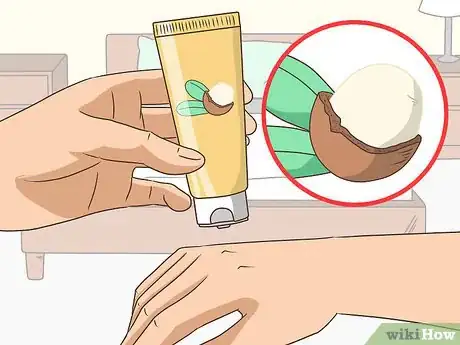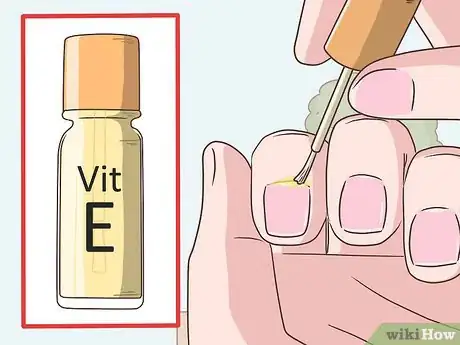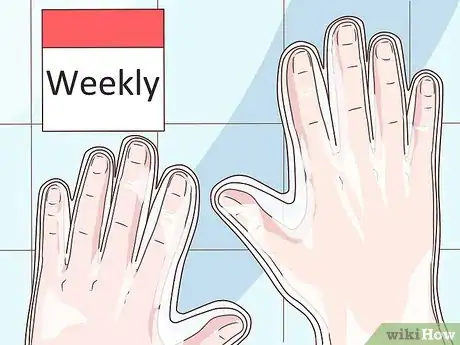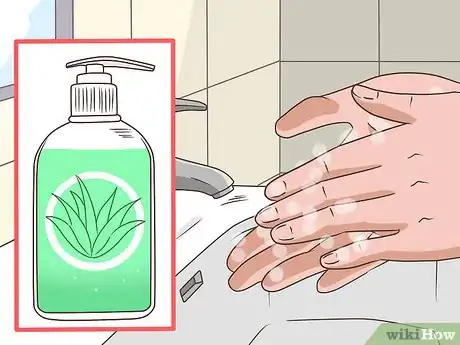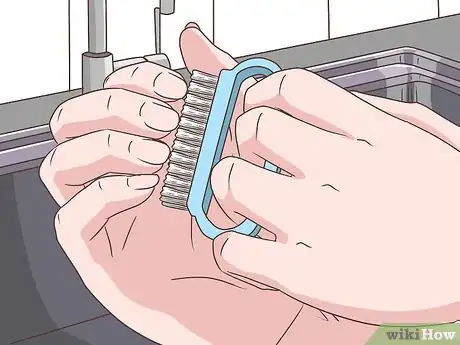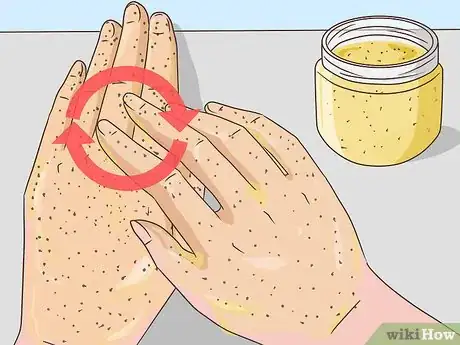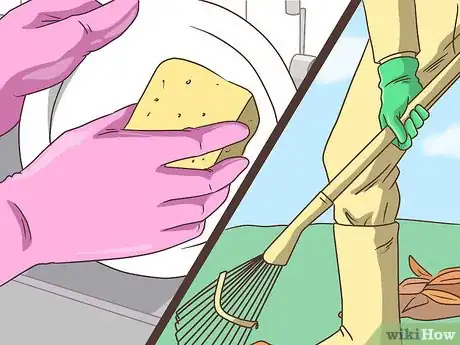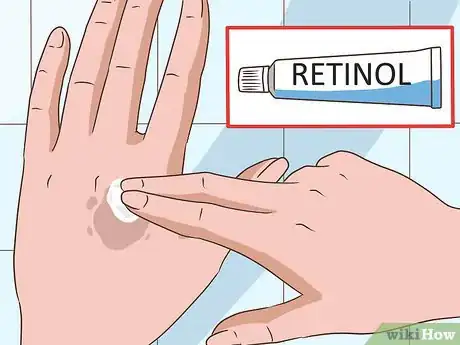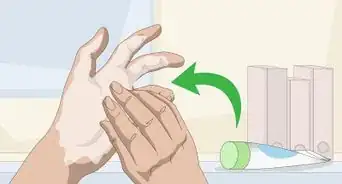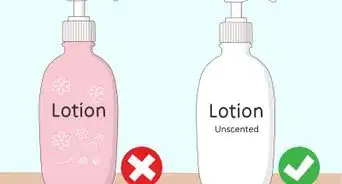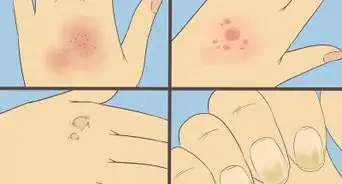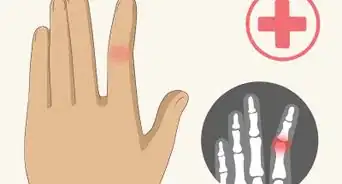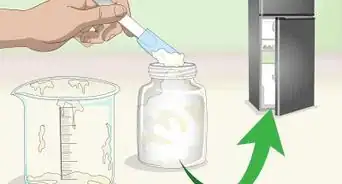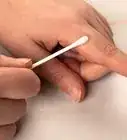This article was co-authored by Lydia Shedlofsky, DO. Dr. Lydia Shedlofsky is a Resident Dermatologist who joined Affiliated Dermatology in July of 2019 after completing a traditional rotating internship at Larkin Community Hospital in Miami, Florida. She earned a Bachelor of Science in Biology at Guilford College in Greensboro, North Carolina. After graduation, she moved to Beira, Mozambique, and worked as a research assistant and intern at a free clinic. She completed a Post-Baccalaureate program and subsequently earned a Master's Degree in Medical Education and a Doctorate of Osteopathic Medicine (DO) from the Lake Erie College of Osteopathic Medicine.
There are 9 references cited in this article, which can be found at the bottom of the page.
wikiHow marks an article as reader-approved once it receives enough positive feedback. In this case, 94% of readers who voted found the article helpful, earning it our reader-approved status.
This article has been viewed 163,038 times.
Whether it's with a handshake or a friendly wave, your hands can make a very strong first impression. That's why you want them to be soft, smooth, and as healthy as possible. Taking care of them may seem easy, but you want to be sure that you're using the right products to wash and moisturize them so the skin doesn't get dry and cracked. It's also important to protect your hands from things that can irritate them, such as the sun, water, and household chores.
Steps
Moisturizing Your Hands
-
1Apply hand cream regularly. To ensure that your hands stay soft, you should use a hand cream several times a day. Look for a formula that contains emollient ingredients, such as glycerin, shea butter, and natural oils. Massage the cream in after you wash your hands in the morning and before you go to bed at night. If your hands start to feel dry at any point during the day, reapply then as well.[1]
- If you’re worried about your hands being greasy, look for a hand cream that’s designed to be fast-absorbing. It will sink into your skin quickly without leaving any residue behind that might may your hands feel slippery.
- Thick emollient creams can help you avoid dryness or roughness on your hands.[2]
- The skin on men’s hands tends to be thicker, oilier, and hairier, so you may want to purchase a cream designed specifically for male skin. It usually has a richer texture, and doesn’t contain any fragrance.
-
2Use vitamin E oil to moisturize your nails. While you should rub your hand cream over your nails to keep them moisturized, it’s also important to target them directly with more intensive treatments. To keep your cuticles healthy, apply a vitamin E oil to the skin around your nails each night before you go to bed. That will help prevent the skin from becoming cracked and painful.[3]
- You can also purchase a cream specifically for the cuticles that can help moisturize and protect the area.
- Both men and women should take the time to moisturize their nails and cuticles. Whether or not you get regular manicures, neglecting your cuticles can lead to painful hangnails.
Advertisement -
3Treat cracks on your hands with an ointment. When your hands become extremely dry, the skin may actually crack and split. To treat this painful type of dry skin, you need more intensive moisture than a regular hand cream can provide. Reach for a rich ointment instead -- it will deliver moisture and create a barrier over your skin that helps protect and heal.[4]
- If you don’t have a specific ointment for your hands, petroleum jelly works just as well.
-
4Treat your hands with a mask weekly. Even if you moisturize your hands daily, they may not get all the moisture that they need. Use a hand mask once a week to deliver a super dose of hydration that keeps the skin on your hands soft and healthy. Apply it to clean, dry hands, and allow it to sit for the specified time on the packaging. Wash it off with warm water, and follow up with a hand cream to lock in the moisture.[5]
- You can purchase hand masks at drugstores, beauty supply stores, and other stores that specialize in skincare products.
- You can also make a moisturizing hand mask at home with leftover avocado. Mix ½ an avocado with 1 egg white, and apply it to your hands. Allow it to sit on your skin for 20 minutes before rinsing it off.
Keeping Your Hands Clean
-
1Wash with a moisturizing hand soap. It’s important to keep your hands clean, but using an antibacterial hand soap can dry out your skin. Instead, wash your hands with a moisturizing soap that contains hydrating ingredients, such as shea butter, olive oil, or aloe vera, to avoid stripping the natural oils from your skin.
- When you wash your hands, avoid using hot water, which can also dry out your skin. Wash with lukewarm water instead.
- Fragrance-free soaps are gentler on your skin.[6]
- It's important to wash your hands regularly to prevent the spread of contagious disease. You should at least wash your hands before you eat and after you use the bathroom. However, too much hand washing can irritate your skin.[7] [8]
-
2Clean under your nails with a nail brush. Even if you wash your hands regularly, there may be dirt and grime under your fingernails that doesn’t rinse away. While you’re washing your hands, use a good quality nail brush to gently scrub beneath your nails and remove any dirt that may be stuck there.[9]
- When you use the brush, hold it in a downward direction so it’s perpendicular to your nails. Move it along the entire nail, scrubbing back and forth to remove the dirt and debris.
- After scrubbing your nails, rinse away the soap, water, and dirt as you normally would.
-
3Keep your nails trim and well-shaped. You'll have an easier time keeping your nails clean if you groom them properly. Use nail clippers to keep them at a length that you like, and file them with a crystal nail file or gentle emery board into a neat shape, such as a square or oval. [10]
- It's also a good idea to use a cuticle remover and cuticle pusher to keep your cuticles neat. The cuticle is the thin hand of skin around your nail. The remover softens the skin, so you can easily push it back with a metal cuticle pusher or a wooden orange stick. Never cut your cuticles -- the skin may get infected.
-
4Exfoliate your hands weekly. Use a hand scrub once a week to buff away the dry, rough skin and keep your hands soft and healthy. Wet your hands with lukewarm water, and massage a small amount of the scrub over both of your hands, working in circular motions. Rinse it off with warm water, and apply a hand cream.
- Wash your hands with the moisturizing soap before exfoliating.
- You can purchase hand scrubs at the drugstore, beauty supply store, and other stores that sell bath products.
- If you prefer, you can mix up your own all-natural hand scrub with ingredients from your kitchen. Combine equal parts of sugar and olive oil, and use it to scrub the dead skin from your hands.
Protecting Your Hands
-
1Use sunscreen on your hands.[11] Just like the rest of your skin, your hands are vulnerable to damage from the sun, including dark spots that can make them look older. To protect your hands from the sun, apply a broad-spectrum sunscreen with a SPF of 30 or higher everyday.[12]
- Be sure to reapply your sunscreen throughout the day, particularly after you’ve washed your hands.
- If you want to streamline your skin care routine, use a hand cream that has SPF of 30 or higher built into it.
-
2Wear gloves when doing chores. Plenty of the tasks that you have to do around the house can do damage to your hands. Whether you’re washing dishes, doing yard work, or working with tools, always put on a pair of protective gloves first. That will keep your hands from getting dry, cracked, and callused.[13]
- For chores that require submerging your hands in water, plastic or rubber gloves are the best option.
- For light yard work and gardening, cloth gloves are usually effective in protecting your hands from dirty and grime.
- For difficult manual labor, such as working with heavy tools, suede or leather work gloves usually offer the most protection for your hands.
- You should also wear gloves to protect your hands from cold weather, which can dry out your hands too. Knit and leather gloves can both work well, but look for a pair with an insulated lining in material such as fleece to provide the most warmth.
-
3Apply a retinol treatment to dark spots. If your hands have developed dark spots or other discolorations, the best treatment is some type of retinol cream. Retinol helps stimulate the production of new skin cells, so it works well to fade dark spots. Apply a retinol-based cream to your hands before bed to keep your hands clear and smooth.
- Retinol products make your skin more vulnerable to irritation from the sun, so be sure to use sunscreen in conjunction with your retinol cream and apply the cream only at night.
Expert Q&A
Did you know you can get expert answers for this article?
Unlock expert answers by supporting wikiHow
-
QuestionHow can I take care of my hands naturally?
 Lydia Shedlofsky, DODr. Lydia Shedlofsky is a Resident Dermatologist who joined Affiliated Dermatology in July of 2019 after completing a traditional rotating internship at Larkin Community Hospital in Miami, Florida. She earned a Bachelor of Science in Biology at Guilford College in Greensboro, North Carolina. After graduation, she moved to Beira, Mozambique, and worked as a research assistant and intern at a free clinic. She completed a Post-Baccalaureate program and subsequently earned a Master's Degree in Medical Education and a Doctorate of Osteopathic Medicine (DO) from the Lake Erie College of Osteopathic Medicine.
Lydia Shedlofsky, DODr. Lydia Shedlofsky is a Resident Dermatologist who joined Affiliated Dermatology in July of 2019 after completing a traditional rotating internship at Larkin Community Hospital in Miami, Florida. She earned a Bachelor of Science in Biology at Guilford College in Greensboro, North Carolina. After graduation, she moved to Beira, Mozambique, and worked as a research assistant and intern at a free clinic. She completed a Post-Baccalaureate program and subsequently earned a Master's Degree in Medical Education and a Doctorate of Osteopathic Medicine (DO) from the Lake Erie College of Osteopathic Medicine.
Dermatologist
Things You’ll Need
- A moisturizing hand soap
- A nail brush
- A hand scrub
- A hand cream
- Vitamin E oil
- A hand mask
- Sunscreen
- Protective gloves
- Retinol treatment
References
- ↑ http://www.webmd.com/beauty/advances-skin-care-9/hands-fingernails
- ↑ Lydia Shedlofsky, DO. Dermatologist. Expert Interview. 30 September 2020.
- ↑ http://www.webmd.com/beauty/advances-skin-care-9/hands-fingernails
- ↑ http://www.popularmechanics.com/home/tools/reviews/g1609/hey-diyers-heres-how-to-take-care-of-your-hands/?slide=1
- ↑ http://www.saga.co.uk/magazine/style-beauty/beauty/caring-for-ageing-hands#
- ↑ Lydia Shedlofsky, DO. Dermatologist. Expert Interview. 30 September 2020.
- ↑ Lydia Shedlofsky, DO. Dermatologist. Expert Interview. 30 September 2020.
- ↑ http://www.health24.com/Lifestyle/Environmental-health/News/How-often-do-you-wash-your-hands-20120721
- ↑ http://www.beautyheaven.com.au/hands/nail-care-treatments/how-to-clean-nails-properly-7660
- ↑ http://stylecaster.com/beauty/nails-at-home/
- ↑ Lydia Shedlofsky, DO. Dermatologist. Expert Interview. 30 September 2020.
- ↑ https://www.aad.org/media/news-releases/busy-moms-deserve-a-hand-dermatologists-offer-tips-to-prevent-premature-aging-of-the-hands
- ↑ http://www.webmd.com/beauty/advances-skin-care-9/hands-fingernails?page=2
About This Article
Considering how much you use your hands, it’s important to take care of them. Wash your hands throughout the day with a moisturizing soap that contains hydrating ingredients like shea butter, olive oil, or aloe vera. This will help prevent your skin from drying out. You should also apply a hand cream in the morning, before you go to bed, and any other time your hands feel dry to keep them soft. Once a week, use a hand scrub to exfoliate any dry or rough skin. Then, follow up with hand cream to hydrate your skin. If your skin gets dry and cracked at any time, use a rich ointment or petroleum jelly to protect your skin and help it heal. For more tips, including how to take care of your fingernails, read on!
